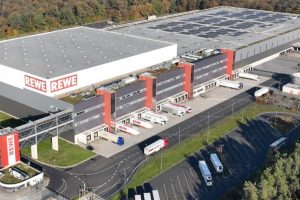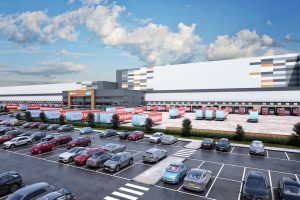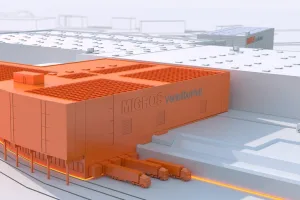Intelligent logistics for fresh food delivery
Three material flows, three shipping areas, three load carriers, and three different target customer groups placed a challenge on ASKO’s fresh food warehouse. Witron’s put together a comprehensive solution for a new warehouse.
The 258,000 sq ft warehouse serves restaurants and hotels who order only a few units; but do so more frequently and at the very last minute. Furthermore, it supplies more than 2,600 stores and 12 regional warehouses.
The picking process must also merge dry goods from the nearby central warehouse with picked goods from the fresh food warehouse in a new consolidation unit.
In January 2017, the OPM was the first system that went into operation, followed by the DPS / OCB, and MPS systems in March 2017. Subsequently, the processes of both systems were merged in May 2017. The consolidation unit was then completed in June 2017. Since then, a Witron Onsite team of 47 staff members – spread over three shifts – ensures a high system availability 7 days a week. They are working as problem solvers and process optimisers.
The technology has to control three different material flows – from receiving to dispatch. Every material flow depends on the order and the definition of the customer. This also means that the material flows are not separated from each other, but there are numerous interdependencies. In other words, intelligent linking is required: the goods arrive at the receiving area, are stored in the fully automated high bay warehouse, and then first take three different routes through the logistics centre.

For example, yogurt is transported on the conveyor system to the Order Picking Machinery (OPM), a fully automated system in the case picking area – at ASKO a system for sausage or dairy products. The majority of the total volume is picked here. The heart of the system is the loading device called COM (Case Order Machine), which is used by many food retailers across the globe. This system is able to pick more than 500 cases per hour onto load carriers in a product-gentle and store-friendly manner. ASKO operates 14 COM machines that pick more than 7,000 cases per hour. Four additional COMs are currently being implemented. An expansion that was already considered in the concept when starting the design phase. The implementation became necessary earlier than originally planned due to the positive business development of ASKO, which were also influenced by innovative logistics processes and the resulting competitive advantages.
An example of another route for the separately packed steaks is via the Dynamic Picking System (DPS) and the Order Consolidation Buffer (OCB). Here too, the extensions are already in the pipeline and will be implemented during ongoing operation by the end of 2019. The highly dynamic and semi-automated picking of small parts in the DPS is supported by a pick-by-light system. ASKO also stores large toteable slow movers in the DPS. The DPS works according to the goods-to-person / person-to-goods principle. Depending on the order structure, the items are arranged in the pick front either permanently or on demand, such that it is optimised at all time. ASKO uses totes with three different height options. The DPS area is again dependent on the OPM and thus also on the following MPS unit.






